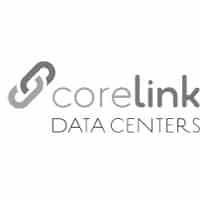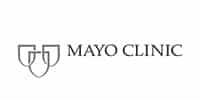After the last year, we now know more than ever before, how important reliable power is in a healthcare setting. COVID-19 has put a strain on all healthcare settings like never before. Reliable power can be life or death in a hospital setting and is imperative for keeping vaccines cold and viable to be administered. Many healthcare providers have already experienced power outages that left them scrambling for a way to salvage their vaccine supply so as to not waste important vaccines that people need.
Reliable Power is More Important in Healthcare Than Ever Before
 The Verge illuminates the need for reliable power in healthcare settings, “A public health emergency like the COVID-19 pandemic amplifies the risks of power outages. Hospitals, public health departments, and other health care facilities are already stretched thin. Many doctors aren’t used to treating patients with limited power and may have to navigate it on the fly when they’re already strapped for resources. Shelters for people without power, like warming centers in Texas, could risk spreading COVID-19 even though they’re critical to keep people from freezing. And any facility storing COVID-19 vaccines has to devote attention to the freezers keeping them safe in addition to managing power to their health records or their oxygen supply. Doses are still limited, and any vial lost because it warmed up too quickly means fewer people can be protected from COVID-19. The stakes of a power outage for health care are always high. But when the system is already unstable and run ragged by one emergency, a second stressor compounds the pressure to keep the lights on and the freezers running.”
The Verge illuminates the need for reliable power in healthcare settings, “A public health emergency like the COVID-19 pandemic amplifies the risks of power outages. Hospitals, public health departments, and other health care facilities are already stretched thin. Many doctors aren’t used to treating patients with limited power and may have to navigate it on the fly when they’re already strapped for resources. Shelters for people without power, like warming centers in Texas, could risk spreading COVID-19 even though they’re critical to keep people from freezing. And any facility storing COVID-19 vaccines has to devote attention to the freezers keeping them safe in addition to managing power to their health records or their oxygen supply. Doses are still limited, and any vial lost because it warmed up too quickly means fewer people can be protected from COVID-19. The stakes of a power outage for health care are always high. But when the system is already unstable and run ragged by one emergency, a second stressor compounds the pressure to keep the lights on and the freezers running.”
Healthcare Facilities Must Prepare for Any Scenario That Could Lead to a Loss of Power
As we have all seen, none of us can predict the future or what catastrophic events may jeopardize our ability to provide necessary healthcare. But, we can prepare as best as possible and one of the most essential preparations should be ensuring that there is a reliable power supply in any healthcare setting. In some cases (or maybe even most), this will mean having redundant power supplies such as generators and uninterruptible power supplies (UPS).
Making a Financial Investment in Your Hospital to Prevent Potential Future Loss
After a challenging financial year for all businesses and certainly the healthcare industry, the cost of ensuring redundant and reliable power may seem too high to undertake at this time. However, most facilities that evaluate the cost of downtime (the average cost of downtime in healthcare tends to be thousands of dollars every minute) is far more than the cost of investing in a reliable uninterruptible power supply. And obviously, the financial consequences are not the only concern when discussing downtime in healthcare settings. It diminishes healthcare provider’s ability to provide the care their patients need in an effective and safe way.
Determining What Type of Redundant UPS System Your Healthcare Facility Needs
Unless you have assessed your healthcare facility’s power needs in the last year, it is time to reassess. This has always been a good rule of thumb but with COVID-19, we now have a completely new perspective on what types of demands healthcare facilities may face and can factor in the experience of the last year when determining power needs. The assessment itself should be conducted by a professional that understands your healthcare facility’s power equipment and how to best manage your current needs while anticipating future needs that may arise so that you can scale your power supply to meet demand rapidly. This will empower your healthcare facility to minimize or eliminate downtime altogether, saving significant money and potentially lives in the event of an emergency.
Assessing a Healthcare Facility’s Power Supply and Needs
 Some of the things that will be assessed in a healthcare facility include the type of backup power supply currently being used and whether or not it can meet current and future demands, the age of the facility and its equipment, the condition of power equipment, whether or not the facility has redundant power supplies in place, and whether or nor your healthcare facility meets current code requirements as outlined by the government.
Some of the things that will be assessed in a healthcare facility include the type of backup power supply currently being used and whether or not it can meet current and future demands, the age of the facility and its equipment, the condition of power equipment, whether or not the facility has redundant power supplies in place, and whether or nor your healthcare facility meets current code requirements as outlined by the government.
With a healthy grasp of the things being assessed, the next step will be to consider what continuous reliable power supply you need as well as a redundant UPS. Meeting the minimum requirements of your healthcare facility’s power needs is great but that won’t last long. Things change at a moment’s notice and so you want to have the ability to scale your power supply as needed. Ideally, your current power needs should only be 70-80% of what your current supply is capable of. Additionally, once the assessment is complete, it is easier to determine ways that power can be saved and your facility can become more energy efficient which has the potential to create huge savings depending on the size of your facility.
Redundancy is the Name of the Game for Healthcare Facility Power Supplies
We all need a little insurance in life to protect us against the unlikely but potentially devastating circumstances of an unforeseen incident. Healthcare facilities are no different. They should never rely on only one type of backup power. Rather, there should be a multi-layered approach to healthcare backup power supply and they should be set up in a way that, if one supply goes down, the backup supply automatically kicks in to minimize downtime and the potentially catastrophic results it can have in a healthcare setting.
Maintaining Your Healthcare Facility’s UPS and Power Supply
Your healthcare facility’s power supply is not something that will only need to be assessed once, designed, deployed, and forgotten. Your facility must have a power supply maintenance plan in place that is consistent, thorough, and well-documented. By doing so, you maximize the life of your power equipment which provides a better return on your initial investment in new equipment and also helps prevent many problems from arising in the first place.




























